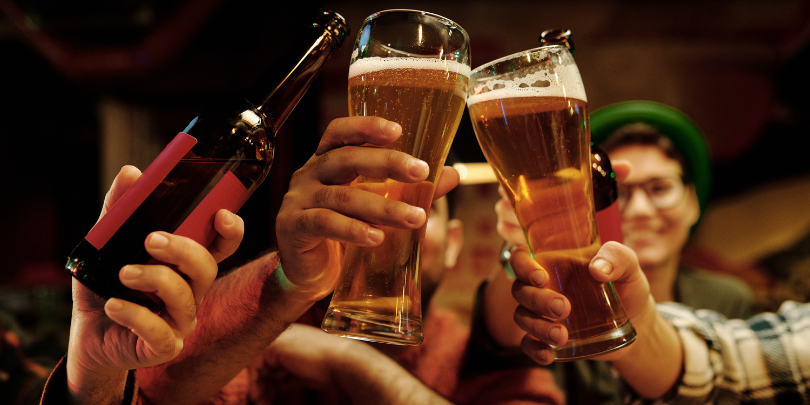
Mid-strength excels, NoLo slows: Research

Mid-strength beer has seen a rise in Australia, while NoLo continues to hold a small market share, according to new research by the University of Adelaide.
Prepared for the Brewers’ Association of Australia, the research paper by Professor Kym Anderson of the School of Economics and Public Policy, University of Adelaide found that, despite the attention given to no and low alcohol beers, mid-strength beer consumption has steadily risen in Australia.
“The mid-strength beer category has enjoyed very rapid growth in Australia over the past three decades, its share rising from 10% in the 1990s to 17% in the 2000s to more than 25% in recent years,” Professor Kym Anderson said in the paper.
“This is remarkable, as mid-strength is not a significant beer category in any other country except Sweden (where there is a concessional VAT, 12% instead of 25%, on beer up to 3.5% ABV).
“Yet further growth in this category is possible given that standard full-strength beer still accounts for three-fifths of Australian beer sales, and that these days mid- and full-strength beers are seen as relatively close substitutes in terms of flavour.”
The paper still noted the potential for no-alcohol beer to grow in Australia albeit, from a small base.
In comparison with 11 other countries including New Zealand, Belgium and Japan, the research found no other country had a lower no-alcohol share in national beer sales than Australia, with 0.2 per cent.
Canada, Poland and Spain each held larger shares with 1.1, 2.3 and 6.8 per cent respectively.
“Even if that Australian share is currently close to 1% and were to double over the next five years, that would still be fairly low compared with lots of OECD countries,” Professor Anderson said.
Professor Anderson said that while the low-alcohol category is largely currently cannibalising existing beer consumers, he felt it had the potential to attract new markets.
“To date this category’s growth has been mainly at the expense of higher-alcohol beers, but as it becomes better known it may also attract some alcohol abstainers and some drinkers of wine and spirits who see it as a substitute for occasions when they seek a non-alcoholic beverage.
“The volume of other non-alcoholic drink sales in Australia is roughly double that of total beer sales, so even if only a small fraction of consumers of those other beverages switched to no-alcohol beer, that would add to the overall volume of beer consumed.”
The research also found that Australia holds a 3.7 per cent share in low-alcohol specifically with Germany having a higher share of 5.3 per cent.
It should be noted that official data figures in the report refer to the Australian Taxation Office and the Australian Bureau of Statistics’ definitions of each category, which are:
- No-alcohol: <1.15% abv;
- Low-alcohol: 1.15% to <3% abv;
- Mid-alcohol: 3% to <3.5% abv;
- Full-strength: ≥3.5% abv.
“How rapidly that share grows locally will depend to a considerable extent, as in the recent past, on developments in the mid-strength category (including any change to relative rates of excise on the various beer categories),” he said.
While Professor Anderson also noted the potential for NoLo globally, the research found that it holds a combined 3.7 per cent volume of global beer sales.
“This development is still in its infancy globally, with the share of no-alcohol, low-alcohol and mid-strength beers respectively accounting in 2021 for just 2.0%, 0.7% and 1.0% of the volume of global beer sales,” he said.
“However, that 3.7% total is nearly double the world’s 2.0% of a dozen years ago.”
This contrasts with recent numbers from IWSR (the International Wine and Spirits Research) which reported that NoLo products, which includes beer, cider, wine, spirits and ready-to-drink products, grew by more than seven percent in volume across 10 global markets in 2022.
It also predicted that no-alcohol beer would contribute to nearly 70 per cent of the overall NoLo growth between 2022 and 2026.
The IWSR’s global analysis doesn’t appear to factor in Australia’s unique position around mid-strength consumption and its development driven by domestic legislation and taxation drivers.
Professor Anderson noted in the paper that NoLo trends could improve if Australia’s excise regime is reformed.
“Currently that regime discriminates somewhat in favour of lower-alcohol beers, but much more so for tap than for packaged products,” he said.
“Should Australia choose to simplify that regime to nudge consumers toward lower-alcohol products, it could have non-trivial impacts on beer sales.
“In particular, if the tax on packaged low and mid-strength beers was lowered to a common rate set at, say, the current one for mid-strength beer on tap, that would encourage more drinkers of full-strength packaged beer to switch to one with lower alcohol.”



